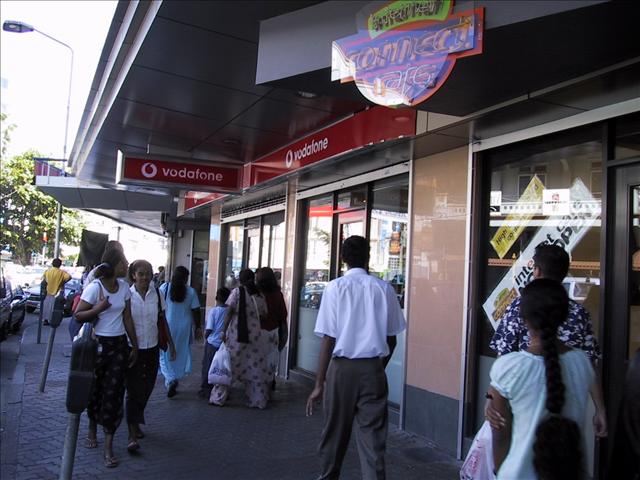Indians perhaps understand the malevolence of racial tension and hatred than any other groupings in the world.
From India, which accommodates hundreds of the so-called aristocrats to the so-called pariahs or ‘untouchables,’ to South Africa, Zimbabwe and other countries where distinctions are based on colour and creed, racism is a dirty word that has destroyed lives and property over the past several centuries.
The case of Indo-Fijians is probably the most pathetic and repulsive. Dragged from their home country 133 years ago, with the promise of ‘better work, better pay and better living conditions’ than what was obtained in India then, they were subject to the worst form of segregation, subjugation and subsistence.
 There was no resistance of the kind seen today but even the slightest sign of plea for a somewhat human treatment was met with the worst form of physical and mental abuse, culminating in punitive measures of the unimaginable kind.
There was no resistance of the kind seen today but even the slightest sign of plea for a somewhat human treatment was met with the worst form of physical and mental abuse, culminating in punitive measures of the unimaginable kind.
Roots of racism
Racism has had its roots run deep into the country’s psyche, for it did not die with the obnoxious Girmit period. Instead it grew, planting itself in almost every aspect of Fijian life, only to wrought more misery upon Indo-Fijians.
According to historians, racial friction between ethnic Fijians and Indo-Fijians is not new. They say that when Ratu George Cakobau ceded Fiji to Britain back in 1874, the country was mainly populated by indigenous Fijians.
From 1879, labour for Fiji’s expanding sugar plantations was provided by the importation of indentured workers from India. When the flow of indentured labour stopped in 1920, many other free migrant labourers arrived from India.
By the mid-1960s, Indo-Fijians, most of them by then born in Fiji, had become a majority of the population. Thanks to the migration of Indo-Fijians and an increase in ethnic-Fijian birth rates, Indo-Fijians accounted for almost 50% of the population by the late 1980s.
The Indian and Fijian communities lead a largely separate existence, with little intermarriage.
In May 1987, the election of a government largely backed by Indo-Fijians brought about events that were repeated later that year and 13 years later in May 2000.
Successive coups
Within a month after election in 1987, Colonel Sitiveni Rabuka mounted a coup aimed at securing a Fiji in which the ethnic Fijians would not be dominated by immigrants or their descendants.
As a result of that coup, Fiji left the Commonwealth, but was later allowed back.
Ironically, it was Mr Rabuka’s steps towards compromise in the 1990s that precipitated the rebellion in May 2000.
In 1997, he pushed through a new constitution, in cooperation with the leading Indo-Fijian opposition leader of the day, Jai Ram Reddy.
Indo-Fijians were granted a greater political stake in the system and a preferential voting system based on Australia’s was adopted.
Contrary to expectations, both Mr Rabuka’s and Mr Reddy’s parties were emphatically defeated at the polls in May 1999.
The ethnic-Fijian vote was divided among five parties.
The Fiji Labour Party, led by Mahendra Choudhary, a Fijian of Indian descent, stormed home, with an absolute majority, on the basis of 66% of the Indo-Fijian vote and given the curious voting system, transferred votes from defeated Fijian political parties. But his government was short-lived.
Fijian nationalists took over the country’s parliament on May 19 2000, while their leader, George Speight, supported by an army group called the Counter-Revolutionary Warfare Squadron, seized Mr Chaudhary and his ministers.
Fiji’s president, Ratu (chief) Sir Kamisese Mara, declared a state of emergency.
The army and police chiefs announced their support for the president. Rampaging Fijians pillaged the city centre, looting mainly Indian shops.
Hundreds of ethnic-Fijian supporters of Mr Speight entered the parliament gardens, passing through a porous police cordon. They were camped out, roasting pigs and chickens in makeshift earth ovens and drinking kava.
It did not last long. Mr Speight was overcome thereafter, tried and sent to prison.
Bainimarama’s promise
It was the onset of the Laisenia Qarase government that led to further tension between Fijians and Indo-Fijians and his open policy of segregation and attempts to pass legislation that tended to relegate the latter perpetuated racial disharmony.
Mr Qarase and his government were accused of corruption, divisive politics and plunging the country into a quagmire of racial tension.
Fiji was alleged to be descending to depths of depravity and economic chaos, forcing the hand of army chief commodore Frank Bainimarama to overthrow Mr Qarase and his government, impose military rule and install an interim government with the self-assigned office of interim prime minister.
Not surprisingly, Indo-Fijians welcomed the move, for at last they saw a glimmer of hope, with Mr Bainimarama speaking the language that was music to their ears – the language of equality, equal opportunity for all, irrespective of their origin or descent.
The rest of the world is at odds with Mr Bainimarama for abrogating the constitution, ordering reforms and delaying elections.
But the people seem to be either happy or indifferent or both.
Just how the situation will pan out remains to be seen.
Meanwhile Indo-Fijians have at last appeared to have met with equity, peace of mind and the right to be on par with their ethnic counterparts.
They should not be blamed for courting a desire for its prolongation.






